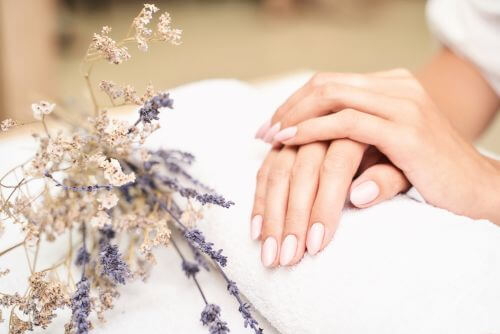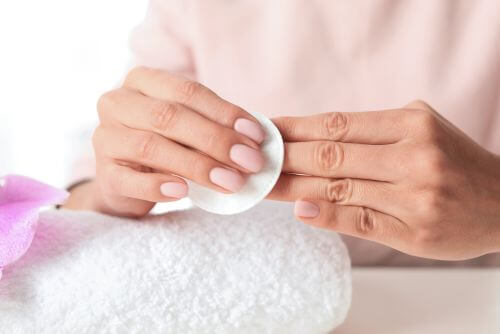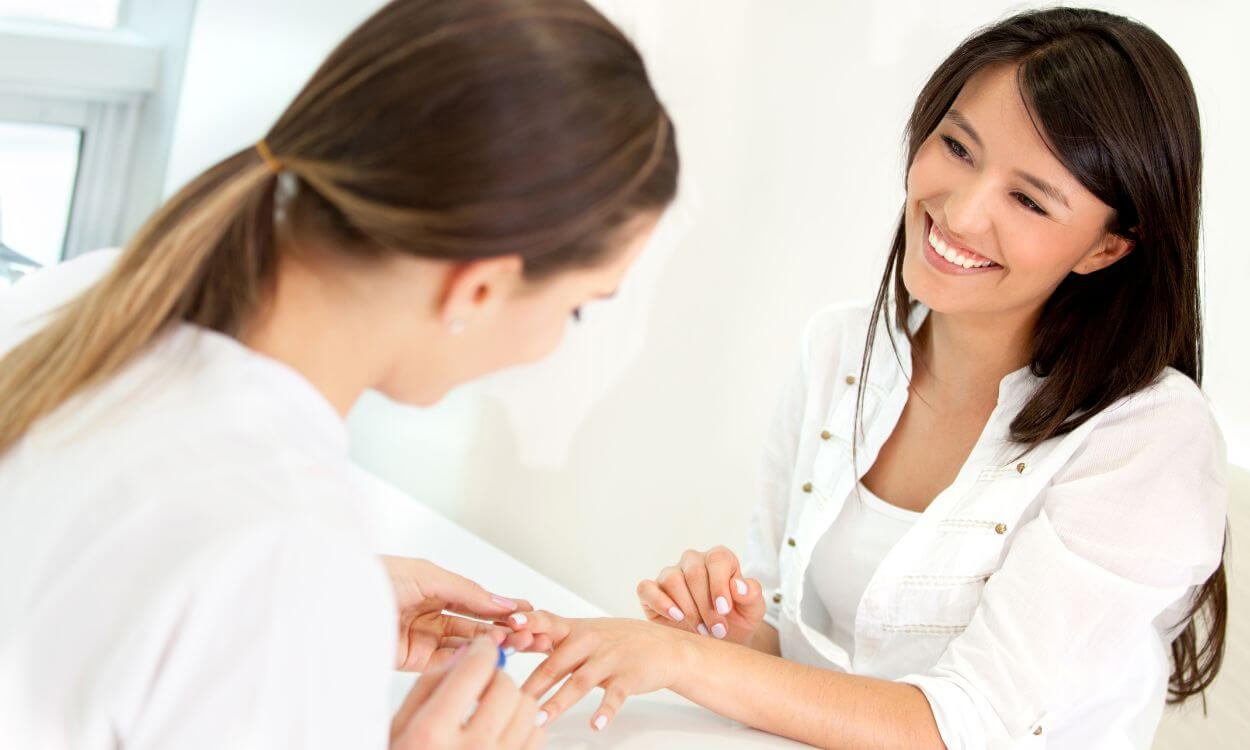Experiencing sore nails after acrylics are removed is a common concern for many. This discomfort often results from the removal process, which can leave your natural nails weakened, thin, and sensitive. The soreness usually stems from the thinning of the nail plate and the possible trauma caused during the removal. The good news is that with the right care and patience, your nails can recover. In this article, we’ll explore why this happens, how to ease the pain and the best practices for restoring your nails to their healthy state.
Causes of Sore Nails After Acrylics Removed

Experiencing sore nails after acrylics are removed is a common issue that many individuals face. This discomfort typically arises from a combination of factors related to both the application and removal processes. Acrylic nails, while enhancing appearance, can affect the health of natural nails in various ways.
- Chemical Exposure: Acrylic application involves adhesives and solvents that can strip away natural oils and weaken the nail structure, making it more sensitive after removal.
- Improper Removal Techniques: Using excessive force or incorrect methods to pry off acrylics can cause trauma to the natural nails and nail bed, leading to inflammation and pain.
- Trauma to the Nail Bed: The process of removing acrylics can sometimes damage the nail bed, causing soreness and sensitivity as the nails recover.
- Thinning of the Natural Nails: Over-filing during the application or removal of acrylics can thin the natural nails, increasing their susceptibility to discomfort.
- Infection Risks: If the removal process causes damage to the nail or cuticle, it may create an opportunity for infections, which can contribute to soreness.
- Delayed Nail Recovery: Natural nails might take time to regain their strength and health after acrylics are removed, leading to prolonged sensitivity.
Understanding these causes can help in taking appropriate steps to alleviate the discomfort and promote healthier nails.
Immediate Steps to Take When Experiencing Sore Nails
If you find yourself with sore nails after acrylic removal, taking prompt action can help alleviate discomfort and promote healing:
- Avoid Further Trauma: Refrain from applying additional pressure or engaging in activities that could exacerbate the soreness. Give your nails a break from any further enhancements or harsh treatments.
- Gently Cleanse and Moisturize: Clean your nails with a mild, non-acetone nail polish remover and apply a nourishing cuticle oil or moisturizer. This helps to restore moisture and reduce dryness that can aggravate soreness.
- Use Soothing Treatments: Soak your nails in a solution of warm water and a few drops of essential oil, such as tea tree or lavender, which have anti-inflammatory properties. This can help soothe the pain and promote healing.
- Apply a Cold Compress: If your nails are swollen or inflamed, applying a cold compress can help reduce swelling and numb the area, providing temporary relief from soreness.
- Consider Over-the-Counter Pain Relief: For more significant pain, an over-the-counter pain reliever like ibuprofen can help reduce discomfort and inflammation.
- Keep Nails Short and Clean: Trim your nails to avoid any additional pressure or snagging, and keep them clean to prevent infections. This minimizes stress on the sensitive areas and helps them recover more quickly.
By taking these immediate steps, you can effectively manage the discomfort and support the healing process for your sore nails.
How to Soothe Sore Nails: Home Remedies and Treatments
When dealing with sore nails after acrylic removal, several home remedies and treatments can provide relief and promote healing:
- Warm Soaks: Soak your nails in a bowl of warm water mixed with a few drops of essential oils such as lavender or chamomile. These oils have soothing properties that can help reduce pain and inflammation while the warm water improves blood circulation.
- Aloe Vera Gel: Apply pure aloe vera gel directly to the affected nails. Aloe vera is known for its healing and anti-inflammatory properties, which can soothe sore nails and promote faster recovery.
- Coconut Oil: Gently massage coconut oil into your nails and cuticles. Coconut oil has moisturizing and antibacterial properties, helping to alleviate dryness and prevent infection.
- Tea Tree Oil: Dilute a few drops of tea tree oil with a carrier oil, such as olive oil, and apply it to your nails. Tea tree oil has antifungal and antiseptic properties that can help with healing and reduce any risk of infection.
- Epsom Salt Soak: Dissolve Epsom salt in warm water and soak your nails for 10-15 minutes. Epsom salt helps to reduce swelling and draw out toxins, which can ease soreness.
- Honey: Apply a thin layer of raw honey to your nails. Honey is a natural humectant and has antibacterial properties that can help with healing and moisture retention.
- Avoid Harsh Chemicals: During the recovery period, avoid using harsh nail products or chemicals that can further irritate or weaken your nails. Opt for gentle, nourishing treatments instead.
Using these remedies can provide significant relief from soreness and aid in the healing process for your nails.
Preventing Soreness: Best Practices for Acrylic Removal

To avoid soreness and ensure a smoother removal process for acrylic nails, follow these best practices:
- Seek Professional Removal: Have your acrylic nails removed by a trained nail technician. Professionals use proper techniques and tools to minimize damage to your natural nails and surrounding skin.
- Use Proper Soaking Methods: Soak your acrylic nails in a gentle acetone solution as recommended by professionals. This helps to soften the acrylic, making it easier to remove without excessive force.
- Avoid Prying or Pulling: Do not attempt to pry or pull off acrylic nails. This can cause significant damage to the natural nail and nail bed. Instead, allow the acetone to break down the acrylic gradually.
- Minimize Filing: Avoid excessive filing of the natural nails during removal. Over-filing can thin and weaken the nails, making them more susceptible to soreness and damage.
- Moisturize Before and After Removal: Apply a nourishing cuticle oil or moisturizer to your nails and cuticles before and after removal. This helps to restore moisture and protect the natural nail from becoming dry and brittle.
- Allow Recovery Time: Give your natural nails time to recover between acrylic applications. Avoid applying new acrylics immediately after removal to let your nails regain strength and health.
By following these best practices, you can reduce the risk of soreness and maintain the health of your natural nails during and after the acrylic removal process.
Tips for Nail Recovery and Strengthening
To support the recovery and strengthening of your nails after acrylic removal, consider the following tips:
- Maintain a Balanced Diet: Eat a diet rich in vitamins and minerals that promote nail health, such as biotin, vitamin E, and zinc. Foods like eggs, nuts, leafy greens, and fish can help strengthen your nails from the inside out.
- Keep Nails Moisturized: Regularly apply cuticle oil or moisturizing hand cream to keep your nails and cuticles hydrated. This helps prevent dryness and brittleness, which can hinder the recovery process.
- Avoid Harsh Chemicals: Minimize exposure to harsh chemicals, such as those found in cleaning products and nail polish removers. Opt for gentle, non-acetone removers and wear gloves when using cleaning agents.
- Use Nail Strengtheners: Apply a strengthening nail polish or treatment designed to fortify weak nails. Look for products containing keratin or calcium to help rebuild and strengthen the nail plate.
- Practice Proper Nail Hygiene: Keep your nails trimmed and filed to avoid snags and tears. Regularly clean your nails and avoid biting or picking at them, which can lead to further damage and slow recovery.
- Incorporate Nail-Friendly Supplements: Consider taking supplements specifically formulated to support nail health. Biotin and collagen supplements can be beneficial for promoting stronger, healthier nails.
- Give Your Nails a Break: Allow your nails to rest from acrylics or other enhancements to give them time to naturally recover and regain strength. This helps prevent ongoing damage and supports overall nail health.
By following these tips, you can effectively aid in the recovery of your nails and enhance their strength and resilience.
When to Seek Professional Help for Persistent Nail Soreness
If you experience persistent nail soreness after acrylic removal, it is important to seek professional help in the following situations:
- Severe Pain or Discomfort: If the soreness is intense and does not improve with home remedies, it may indicate more serious damage or complications that require medical evaluation.
- Signs of Infection: If you notice symptoms such as redness, swelling, pus, or increased warmth around the nail area, it could be a sign of infection. Infections need prompt medical attention to prevent further complications.
- Persistent Sensitivity: When soreness persists for an extended period despite following proper care and treatment, it is advisable to consult a healthcare professional. Persistent sensitivity could indicate underlying issues that need professional assessment.
- Nail Changes: If you observe significant changes in the appearance of your nails, such as discoloration, deformity, or separation from the nail bed, seek professional help to determine the cause and appropriate treatment.
- Severe Trauma or Injury: If you experience significant trauma to your nails or nail beds during the acrylic removal process, such as deep cuts or severe bruising, it is important to have a medical professional assess and treat the injury.
- Unusual Symptoms: If you experience any unusual symptoms or reactions after acrylic removal that are not typical, such as systemic symptoms like fever or nausea, it is crucial to seek medical attention to rule out any underlying health concerns.
Addressing persistent nail soreness with professional guidance ensures proper diagnosis and treatment, helping to prevent further issues and support effective recovery.
What are the common causes of persistent nail soreness after acrylic removal?
Persistent nail soreness can be caused by several factors, including damage to the natural nail, infection, improper removal techniques, or underlying health issues. It may also result from inadequate nail care or exposure to harsh chemicals.
How long should I expect nail soreness to last after removing acrylics?
Some discomfort is normal and should improve within a few days to a week. If soreness persists beyond this period or worsens, it could indicate a more serious issue requiring professional evaluation.
What are the signs that I might have an infection in my nails?
Signs of infection include redness, swelling, warmth, pus, or throbbing around the nail area. If you notice these symptoms, it is important to seek medical attention promptly.
Can I treat persistent nail soreness at home, or should I see a doctor?
Mild soreness can often be managed with home remedies and proper nail care. However, if the soreness is severe, persistent, or accompanied by symptoms of infection, it is advisable to consult a healthcare professional for appropriate treatment.
What should I do if I notice changes in my nail appearance, like discoloration or deformation?
Changes in nail appearance, such as discoloration, deformation, or separation from the nail bed, may indicate underlying issues that need professional assessment. Consult a dermatologist or healthcare provider to determine the cause and receive appropriate treatment.
How can I prevent soreness and damage when removing acrylic nails?
To prevent soreness, seek professional removal, avoid prying off acrylics, use proper soaking methods, and minimize filing. Proper aftercare, including moisturizing and avoiding harsh chemicals, can also help maintain nail health.
Is it safe to apply new acrylics over sore nails?
It is not recommended to apply new acrylics over sore or damaged nails. Allow your natural nails time to heal and strengthen before applying any new enhancements to avoid further damage and discomfort.
Conclusion
In conclusion, dealing with sore nails after acrylics are removed can be challenging, but understanding the causes and following proper care can make a significant difference. By using effective home remedies, avoiding further damage, and seeking professional help when needed, you can alleviate discomfort and promote healthy nail recovery. Remember, giving your nails time to heal and strengthening them properly will ensure they stay in great shape and are less prone to soreness in the future.



